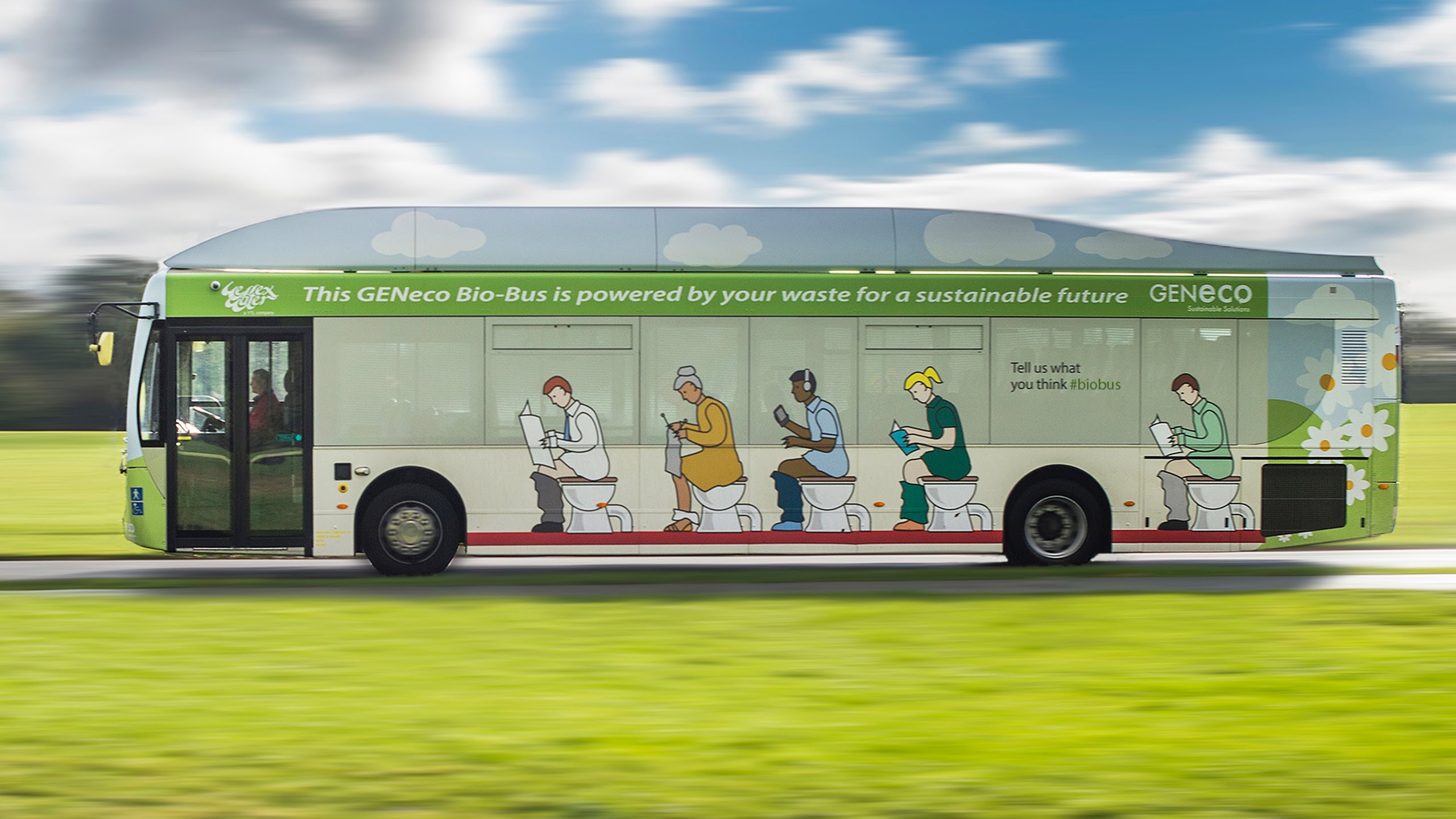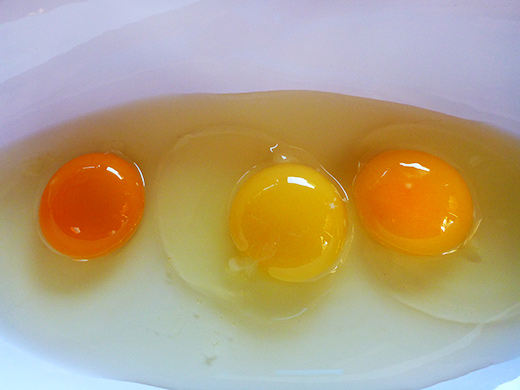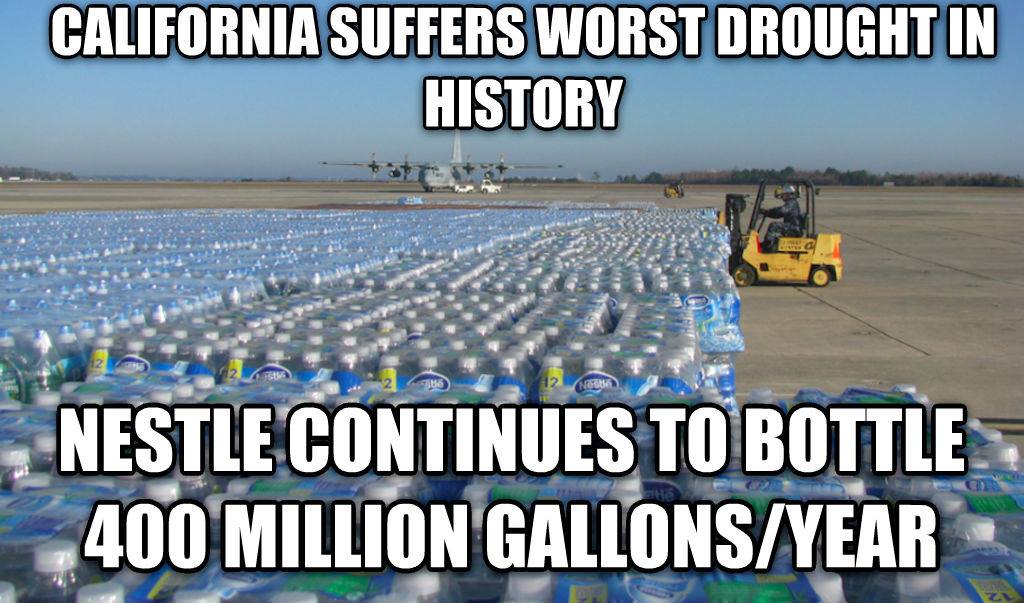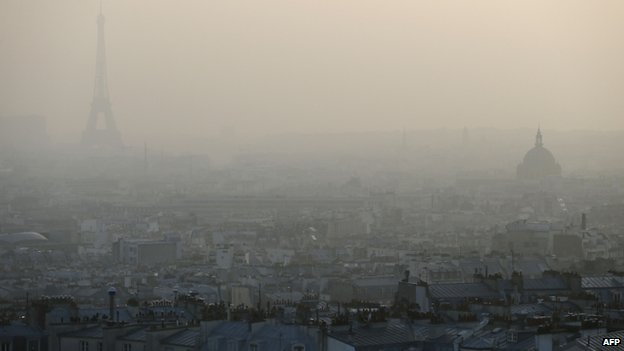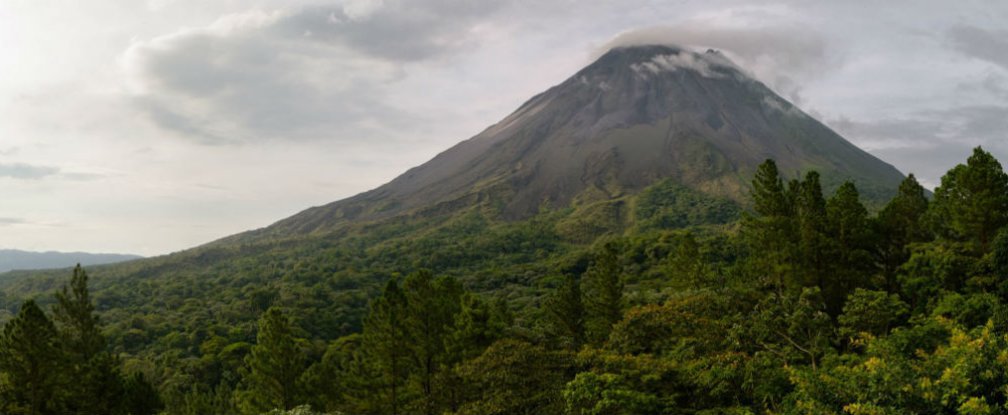Japanese Scientists Have Successfully Transmitted Electricity Wirelessly Through The Air
Scientists in Japan have successfully transmitted electricity wirelessly through the air, validating much of the work Nikola Tesla did while he was alive. Debate has raged for decades about whether it could be done, and scientists with the Japan Aerospace Exploration Agency have done it. They used microwaves to deliver electricity to a target 55 meters away.
“This was the first time anyone has managed to send a high output of nearly two kilowatts of electric power via microwaves to a small target, using a delicate directivity control device,” a spokesman for the agency told AFP on Thursday.
“SSPS consists of a space-based power generation/transmission facility that gathers sunlight, converts it into microwaves or laser beams, and transmits those to the ground; and a power receiving facility on the ground,” explained researcher Yasuyuki Fukumuro.
“There are many technological challenges to solve before SSPS can be implemented. When transmitting power by microwaves, a significant technological challenge is how to control the direction, and transmit it with pinpoint accuracy from a geostationary orbit to a receiving site on the ground,” he added.
https://www.youtube.com/watch?v=OLdXyASvw9U
This Former Marine Walked Away From Civilization And Into The Woods. His Life Will Amaze You!

Meet Mick Dodge. Mick has spent 25 years living away from civilization entirely, living off of the land in a rainforest. Mick is a former marine who left his 9-5 job as a heavy equipment mechanic at Fort Lewis to take up an alternative lifestyle.
“That’s my real passion,” says Dodge.
Dodge is a native of the Hoh Rainforest, which is located on the Olympic Peninsula of western Washington State. His great-grandparents originally settled the area. Dodge grew up to travel around the world and become a huge fitness freak.
At 62 years old, Dodge doesn’t have time for any fancy gym, or even society. His gym is the great outdoors. He calls it the Earth Gym, kind of a YMCA in the forest. Dodge spends his days and nights in the forest. He wears no shoes, and simply walks barefoot through streams and between trees. The reason he walks with no shoes is because his feet hurt.
“My feet hurt. They hurt so bad that I could barely walk and I had always used my walk and run to handle the stress of modern living. The Hoh is home for me. So I went home to heal my feet.”
“The results came quickly. Not only were my feet healing, but my back pain, neck pain and most of all my heart pain disappeared, and in no time at all I was back into a dead run, stepping out of the sedentary, stressed, sedated and secured living of the modern world. I was dancing as the fire, running as the wind, strengthening as the stone and flowing as the water within, by the simple act of touching with my bare soles and allowing the Earth to teach.”
Of course, not wearing shoes hasn’t always worked out for him. On three separate occasions, he’s injured his feet. Once while running in the early forest, he almost lost his toes to frostbite. That taught him a lesson. “Don’t throw the baby out with the bathwater.” Sometimes he wears some knee-high buffalo skin boots with elk horn buttons. What a fella!
Dodge is a practical kind of naturalist and it helps him survive. In the wet climate, he wears plastic garments to protect from the rain. “The art of living out here is the art of staying dry,” he said. He also eats pretty much whatever he comes across.
“I am an omnivore, able to eat a wide variety of food, which also means that I learned how to become a scavenger and allowed the hunger in my belly to guide me into discovering all kinds of food. When a cougar kills an elk, the entire forest moves in to eat. So I do the same,” he said. “But there is one highly spiritual food that I try to maintain in my stashes and storage places and that is chocolate-chip cookies. My grandmothers got me hooked on them.”
His lifestyle may make him seem like some kind of crazy forest hermit, but he’s hardly in isolation. He spends his time with a community of mountain dwellers. He even gets the occasional girlfriend. “On my journey, I have formed so many wonderful connections with women, formed strong brother-and-sister relationships with them,” he said. “I may not be able to figure out what they are always talking about. But if their soles are touching the earth, I am more able to figure it out.”
Dodge doesn’t miss civilization, but he doesn’t shun it either. “There is no way to get away from it. So I developed a physical fitness practice in how to step in and out of it, stepping out of the walls, machines, electronics, social babble for a while, ground back into the natural flow of the land, and then go back in.”
Dodge’s life is being covered in a new National Geographic Channel series called The Legend of Mick Dodge. The show focuses on all his adventures in the mountains.
Dodge is an interesting cat. He’s connected with nature, has a sense of humor, and lacks the self-righteousness you get with the off-grid naturalist types. It’s pretty refreshing.
“My family has perfected the art of dodging civilizations for hundreds of years. All I have to do is follow my feet,” Dodge puts it plainly.
Guess which: One Of these Egg Yolks Is Actually From A HEALTHY Chicken!?
One of the more interesting aspects of living in Brazil is the different approaches to food. We are connected to local farms from friends and family, spoiling us with organic homegrown everything. Regarding chicken eggs, the sizes vary, the colors of the shells vary but if the egg comes from the family farm, the yolk almost always a darker color. It is also thicker than the typical yellow yolk you find at the store.
In the United States all the eggs that can be bought at our local supermarket are yellow. Organic, vegetarian or cheap; they are all yellow and the yolk is not as thick. What is the reason for this? Could it be that myself and almost everyone I know has been eating eggs from unhealthy chickens? Have you ever even seen an orange egg? It took me 30 years to discover an egg from a healthy chicken. That’s crazy.
Having returned to the states, Craigslist is the go-to route to accommodate my urban life with homestead flare in search of the dankest foods.
From Garden Betty… Last year, I compared my pasture-foraging, insect-pecking, soil-scratching, whole grain-feeding chickens’ yolks to the yolks of both their “free-ranging” and factory-farmed counterparts. The are clearly visible: Yolks from my homegrown eggs were not only darker orange, but also fuller and thicker. Even the eggshells were denser and harder to crack. But what’s the big deal about orange yolks? Besides being a coveted color, orange yolks are an indication of a well balanced and highly nutritious diet. A few things factor into the making of an orange yolk: xanthophylls, omega-3 fatty acids, and meats. Xanthophylls are a class of carotenoids. Carotenoids are natural plant pigments found in many fruits and vegetables. It’s often thought that beta-carotene, one of the more well-known carotenoids, is responsible for giving yolks the orange pigment that people associate with carrots. But in actuality, beta-carotene benefits yolks nutritionally, rather than colorfully. The carotenoids that cause deeper yolk coloring are xanthophylls, which are more readily absorbed in the yolks. (Lutein is one such xanthophyll, and a lot of lutein means a lot more orange.) Xanthophylls are found in dark leafy greens like spinach, kale and collards, as well as in zucchini, broccoli, and brussels sprouts. Omega-3 fatty acids are highly concentrated in flax seeds and sea kelp, which are both important components of my homemade whole grain chicken feed.
And did you know that chickens are not meant to be vegetarian, no matter what your premium carton of organic/grain-fed/cage-free eggs tells you? Chickens are omnivores by nature and their healthiest diets include meats, such as mealworms, beetles, grasshoppers, grubs, and whatever creepy-crawly they can pull out of the ground. I’ve even heard of chickens (those ballsy ones out in the boonies) attacking small rodents and snakes!
When you have all of these sources incorporated into a hen’s healthful diet, the nutrients they consume are passed on to their eggs and concentrated in their yolks. According to Mother Earth News, which conducted its own egg analysis, and a more recent Pennsylvania State University study, pastured eggs contain higher levels of vitamins A, D and E; more beta-carotene; and more omega-3s.
All this means is that a pastured egg is better for you. And that’s one of the reasons we raise chickens, right?
So, how do we get those delightful dark orange yolks from our backyard chickens?
Let your ladies roam a pasture (or a garden – especially if you’re digging over new beds – or even just a new patch of dirt in their chicken tractor) for an orange-boosting bug buffet.
Give them plenty of fresh greens to increase the lutein in their yolks. The darker the green the better, so I often fix them a feast of edible amaranth (one of my favorite summer greens), kale, collards, broccoli leaves, or whatever I happen to have growing in my garden. If it’s the middle of winter and your garden greens are lacking, you can feed them alfalfa.
They’re very handy helpers at the end of the season when most of my greens have bolted and become bug-ridden. Let the chickens clean up those plants before you pull them out for your compost pile. It’s a win for everybody! (Except the bugs, that is…)

(As an aside, don’t be fooled by the cheater method that egg factories take, and simply feed your chickens more corn. While corn can give your yolks that nice golden color, it has little nutritional value.)
After a few weeks, you’ll be so used to seeing orange yolks (the way most of us have been conditioned to see yellow yolks) that you might even think they haven’t changed in color. Buy some eggs from the store and crack them into a bowl with your homegrown eggs – you’ll be stunned at the difference!
Those are some interesting observations by Garden Betty. Here is a bit more of an explanation by food and nutrition.
When it comes to yolks, the color is determined by a hen’s diet, not its breed (artificial color additives are not permitted in eggs) or the freshness of the egg. Hen diets heavy in green plants, yellow corn, alfalfa and other plant material with xanthophylls pigment (a yellow-orange hue) will produce a darker yellow-orange yolk. Diets of wheat or barley produce pale yellow yolks; hens fed white cornmeal produce almost colorless yolks.
Free-range hens may have access to more heavily pigmented food so they may produce eggs with darker yolks. According to the American Egg Board, consumer preference in the U.S. is typically for light gold- or lemon-colored yolks.
At the end of the day, know your farmer and the diet of the chickens producing the eggs to be eaten.
Comments
comments
World Faces Severe Water Shortage If Changes Are Not Made, UN Warns | VICE News
With the world’s population expected to grow to 9.1 billion by mid-century, already depleted groundwater supplies will continue to be gobbled up by agriculture, industry, power generation and personal use, according to the UN’s annual World Water Development Report.
The report, released Friday, says that around 20 percent of groundwater sources are already “overexploited” – a problem that will only grow more dire by 2050, when demand for water is expected to have risen by more than half.
Most alarmingly, the report warns that as early as 2030, the planet could have only 60 percent of the water required to sustain itself if substantial changes are not made to improve management of the resource.
“Unless the balance between demand and finite supplies is restored, the world will face an increasingly severe global water deficit,” says the report.
“Unless the balance between demand and finite supplies is restored, the world will face an increasingly severe global water deficit.”
Richard Connor, lead author of the UN report and an independent water expert, told VICE News that the crisis could possibly be averted if countries mandate efficient water use and attach a greater price to water itself. He said climate change, which is already beginning to exacerbate variations in weather patterns – some parched climates may become even drier in the future, wetter ones rainier – makes that task even more pressing.
“With respect to climate change, the two major problems have to do with salt water intrusion in aquifers due to sea level rise, as well as the impact in the variability of distribution of rain,” Connor said.
Coastal cities like Kolkata, Shanghai, Dhaka and Jakarta already face a rise in salinization of their fresh water supplies in part due to uncontrolled groundwater extraction. As salt water mixes with longstanding aquifers, both licit and illegal wells are dug deeper, furthering the problem.
In Dhaka, the capital of Bangladesh and one of the most vulnerable cities to sea rise, the World Bank predicts salt content in soil could decrease the yields of some rice crops by more than 15 percent. By 2050 researchers say climate change will cause the salinity of rivers in Bangladesh to vary significantly during dry seasons and lead to the disruption of important aquatic habitats for animals like freshwater fish and prawns. Even road construction will cost more, as higher salt levels in soil cause cracking in paved surfaces.
Related: Despite the Deep Freeze on the US East Coast, This Winter Was the Hottest on Record
Connor said that inefficient water consumption is irreplaceably draining water supplies in places like the Western US, Middle East and in parts of North Africa, China, and small island states in the Pacific.
“In all of these places people rely on ground water for irrigation and other uses.” he said. “And in a lot of cases the ground water isn’t used sustainably, they are basically just taking money out of the bank,” added Connor.
The report highlighted several localized cases where governments were able to better manage supplies. In Cyprus, subsidies and low-interest loans for farmers helped many switch to more efficient irrigation systems. That efficiency, however, may only “lead to the expansion of irrigated areas instead of increased flows in rivers,” it warned.
“In a lot of cases the ground water isn’t used sustainably, they are basically just taking money out of the bank.”
The report arrives as UN officials are coming to grips with the devastation Cyclone Pam last week inflicted on the Pacific island nation of Vanuatu. Scientists say climate change will only worsen the intensity of storms like Pam and Typhoon Haiyan, which made landfall in the Philippines in 2013 with record strength, leaving more than 6,000 people dead. Such storms already are disrupting delicate water supplies in vulnerable areas.
At the opposite extreme, record droughts are hitting places like the Western United States and Brazil, and imperiling agriculture in those areas.
Although industry, power generation and personal use of water loom large in many parts of the world, agricultural activities account for around 70 percent of water use globally, and as much as 90 percent in poorer countries. The UN predicts the sector will need to produce 60 percent more food to feed the world’s population by 2050, and it is not clear where the requisite water for such a surge in food production will come from.
“California is in particular in trouble, which means the US is in trouble, because California is where a lot of the US’s food is produced,” said Connor, who predicted American food prices will rise in the coming years.
Related: Watch A Weeks’ Worth of Senator Ted Cruz Denying Climate Change
The report, which was unveiled in Delhi, called on countries to raise their water tariffs, claiming they were currently “far too low to actually limit excessive water use by wealthy households or industries.”
Governments in developing countries face the daunting goal of decreasing or altering use while at the same time extending proper sanitation systems and clean supplies of fresh water to impoverished communities. In India, where more than half a million people still defecate in the open, some 748 million people also remain without permanent access to an improved drinking water source.
Related: Follow Samuel Oakford on Twitter: @samueloakford
It Might Be Possible To Reduce Carbon Emissions And Grow The Economy At The Same Time
Connor points to UN estimates that put the return on every dollar spent on sanitation at more than five times the initial investment – a payoff seen in decreased healthcare costs due to lessened disease transmission and a subsequent rise in worker productivity. But upfront costs for sanitation systems can be expensive, and in many cases more wells are simply dug.
“If we continue business as usual we are on an unsustainable path,” said Connor.
‘Water man of India’ bags top prize

An award known as “the Nobel Prize for water” has been given to an Indian campaigner who has brought water to 1,000 villages.
The judges of the Stockholm Water Prize say his methods have also prevented floods, restored soil and rivers, and brought back wildlife.
The prize-winner, Rajendra Singh, is dubbed “the Water Man of India”.
The judges say his technique is cheap, simple, and that his ideas should be followed worldwide.
Mr Singh uses a modern version of the ancient Indian technique of rainwater harvesting.
It involves building low-level banks of earth to hold back the flow of water in the wet season and allow water to seep into the ground for future use.

He first trained as a medic, but when he took up a post in a rural village in arid Rajasthan he was told the greatest need was not health care but drinking water.
Groundwater had been sucked dry by farmers, and as water disappeared, crops failed, rivers, forests and wildlife disappeared and people left for the towns.
“When we started our work, we were only looking at the drinking water crisis and how to solve that,” Mr Singh said.
“Today our aim is higher. This is the century of exploitation, pollution and encroachment. To stop all this, to convert the war on water into peace, that is my life’s goal.”
The Stockholm International Water Institute, which presented the prize, said his lessons were essential as climate change alters weather patterns round the world.

Its director, Torgny Holmgren, said: “In a world where demand for freshwater is booming, we will face a severe water crisis within decades if we do not learn how to better take care of our water. Mr Singh is a beacon of hope.”
In its citation, the judges say: “Today’s water problems cannot be solved by science or technology alone. They are human problems of governance, policy, leadership, and social resilience.
“Rajendra Singh’s life work has been in building social capacity to solve local water problems through participatory action, empowerment of women, linking indigenous know-how with modern scientific and technical approaches and upending traditional patterns of development and resource use.”
The award was applauded by Katherine Pygott, a leading UK water engineer who has drawn on Mr Singh’s work to help prevent flooding in the UK.
5 sneaky ways to harness clean energy

By now, we’re all familiar with the mainstays of renewable energy. They’re the solar panel arrays and massive turbine systems that span great lengths, collecting energy from the sun, wind and water and churning out megawatts of energy. It’s these behemoths that we point to as bellwethers of a future where the world no longer depends on fossil fuels.
But recently, some researchers have started to tinker with more subtle ways to harvest energy. They’re mostly unconventional ideas, such as layering tiny and transparent solar cells onto a phone’s touchscreen or a sound conversion technology that allows it to recharge simply by talking into it.
Though these out-of-box approaches don’t receive nearly as much attention as some of the more elaborate industrial-scale projects, they may well turn out to be game-changers in their own right. As such, here are instances where eeking out even a modest amount of energy may make a real difference:
 1. Infrastructure power
1. Infrastructure power
Hydroelectric power came about as a way to take advantage of the enormous flow of energy produced from reservoirs. However, the same principle can also work wherever there’s a strong and steady stream of water, whether it be dams or sewage pipes.
Catching on to this fact, the city of Portland is testing a power-generating water turbine system specially suited for municipal drainage systems. The technology, developed by local start-up LucidEnergy, is projected to contribute up to 1,100 megawatts of electricity annually, enough to power approximately 150 homes.
Roadways are also hotspots for untapped energy. In 2011, a research team were able to harvest energy from the vibrations produced by moving cars by coating a section of the road surface along a Dutch highway with energy-absorbing piezoelectric materials. During the course of three months, they found that, on average, net electrical output was sufficient to run the motion sensors on a traffic light.

2. Ambient energy
To ensure coverage over a given area, WiFi hubs blast signals in all directions. Satellite transmission is somewhat similar, scattering signals across a wide region. As a result, a lot of energy is wasted.
But there are ways to recover some of these lost signals. Researchers at Duke University have converted them into electricity. Employing a special microwave-scavenging metamaterial, they were able to build a device capable of generating up to 7.3 volts. The goal is to eventually incorporate the technology into cell phones, which in many instances can use a little extra juice.

While the idea has been kicked around for some time, the challenge has been figuring out how to implement it on a consumer level. RCA, an electronics brand, caused a bit of stir back in 2010, when representatives unveiled an early prototype of a USB dongle they claimed can give laptops a power boost by trapping stray WiFi signals and storing them as converted energy in an internal battery. However, the Airnergy charger was never released.

3. Body energy
Every person is, in some respect, a walking power plant. Even at rest, the human body generates as much energy as a 100 watt light bulb. Much of this dissipates in the form of heat, though a coat with good insulation properties can momentarily trap enough of it for us to stay comfortably warm at times when temperatures are unbearably cold.

With that line of thinking, Jernhusen, a Swedish real estate firm, had an ambitious proposal. In 2008, the group outlined a plan to construct an office building in Stockholm equipped with a unique heating system that so happened to be powered by the excess body heat of 250,000 some commuters that pass though the nearby central train station each day.
The system, in operation today, is made possible through a series of heat exchangers situated inside the train station’s ventilation system. This is where body heat is converted into hot water and piped in to warm the building. In total, costs are reduced by about 25 percent compared to regular heating systems. And closer to home, the Mall of America in Minneapolis recycles body heat from shoppers to more better regulate the indoor climate.

On a smaller scale, scientists are looking into ways to make good use of energy generated by the body’s internal machinations. Engineers in the United States and China have collaborated on a technology that uses the mechanical energy of a beating heart to pump power to pacemakers. In Boston, a team at the Massachusetts Institute of Technology is developing a tiny chip that pulls in energy from natural processes that take place within the ear canal as a way to extend the long-term implantation of hearing aids.
4. Kinetic energy
In motion, the human body ramps up to where it’s a sort of de facto energy factory. Case-in-point is the Cadbury House gym near Bristol, England, the first in the world to be powered by nothing but the grunt and sweat of members who frequent the exercise facility.

Power is supplied by a network of treadmills, stationary bikes and step climbers custom-made and sold by Technogym, a manufacturer of high-tech training equipment. When in operation, each machine powers itself and channels surplus energy in the form of electricity. The costs for the equipment come in at about 600,000 euros ($630,000). Similar human-powered gyms can be found in Hong Kong and in the United States.
Systems designed to harvest kinetic energy can also supplement power systems anywhere people take part in activities that collectively add up to lots of high-intensity workouts. In 2007, a pair of MIT students proposed using these ” crowd farms” as a way to extract energy for such things as LED lights. More recently, the concept popped up as an ” eco-nightclub ” in London where energy is amassed using blocks made of piezoelectric material, positioned just beneath the dance floor.

5. Self-powered energy (for gadgets)
While you would be hard pressed to find anyone who isn’t pining for a bit more battery life for their mobile devices, keeping pace with the rigorous demands of day-to-day commuting is a whole different story. The “range anxiety” consumers have over a vehicle’s typical per-charge rating is often mentioned as one of their most pressing concerns.
And it’s a problem the industry seems to be looking at from every conceivable angle. For instance, earlier this month, Goodyear unveiled the BH03 concept tire, which feature a combination of piezoelectric materials and black textured thermoelectric patches to absorb energy from vibrations, light and heat. This in turn can be fed to the the battery or sensors. But drivers shouldn’t hold their breath since the company hasn’t detailed how they plan to turn the proof-of-concept into a reality or released any cost estimates.

For those getting around on foot, Pittsburgh-based startup SolePower is in the later stages of finalizing a shoe insert that charges up an external battery as the wearer walks or runs. But unlike other technologies that harvest energy from pressure-induced vibrations, the insoles don’t employ piezoelectric materials. Instead, energy is produced, converted and stored through a series of tiny “mechanical linkages and generators” in the heel, similar to how hand-cranked flashlights work, according to the company’s Web site.
With the insoles, the company claims that an hour of walk time provides about 2.5 hours of talk time on a smartphone.
Free Paris transport to reduce smog

Authorities in Paris have taken the rare step of making public transport free for three days to reduce severe smog caused by unusually warm weather.
The French capital region and 30 other departments have been on maximum pollution alert for several days.
Landmark buildings like the Eiffel Tower were barely visible after a white fog settled over Paris.
The capital’s air quality has been one of the worst on record, French environmental agencies say.
A lack of wind, combined with cold nights followed by unseasonably warm days, has contributed to the worsening conditions.
The smog has also affected neighbouring Belgium, where officials have reduced the maximum speed limit allowed on main roads. The southern Wallonia region said it had also decided to make buses, trains and underground trains free until the pollution emergency was over.
‘Significant risks’
Experts say levels of smog recorded in Paris this week have been similar to those of Beijing in China, one of the world’s most polluted cities.
As part of the emergency measures, commuters in Paris and neighbouring areas will not have to pay for public transport between Friday and Sunday.
Bike sharing services are also free, as are one-hour sessions for electric car shares, the Associated Press news agency reports.


French authorities appealed to drivers to leave their cars at home.
“I am asking all residents in Paris and neighbouring areas to favour the use of public transport,” said Jean-Paul Huchon, the head of the the capital’s transport authority.
He also warned that current pollution levels represented “significant risks” to people’s health.
The elderly, children, asthmatics and people with heart problems have been advised to stay indoors to avoid potential breathing problems.


Environment minister Philippe Martin said air quality had now become “an emergency and priority for the government”.
The country’s northern and eastern regions have been particularly hit by toxic pollutants.
Several other French cities, including Reims, Rouen and Caen, announced they would follow Paris’s example and make their public transport free over the weekend.
Earth is halfway to being inhospitable to life, scientist says
A Swedish scientist claims in a new theory that humanity has exceeded four of the nine limits for keeping the planet hospitable to modern life, while another professor told RT Earth may be seeing an impending human-made extinction of various species.
Environmental science professor Johan Rockstrom, the executive director of the Stockholm Resilience Centre in Sweden, argues that there are nine ” planetary boundaries ” in a new paper published in Science – and human beings have already crossed four of them.
Those nine include carbon dioxide concentrations, maintaining biodiversity at 90 percent, the use of nitrogen and phosphorous, maintaining 75 percent of original forests, aerosol emissions, stratospheric ozone depletion, ocean acidification, fresh water use and the dumping of pollutants.
” The planet has been our best friend by buffering our actions and showing its resilience,” said Rockstrom. ” But for the first time ever, we might shift the planet from friend to foe.”

Rockstrom’s planetary boundary theory was first conceived in 2007. His new paper reveals that because of climate stability, which began when the Ice Age ended 11,000 years ago, a planetary calm helped our ancestors to cultivate wheat, domesticate animals, and launch industrial and communications revolutions. But those advances have strained the stability of the planet, and Rockstrom says we have broken four boundaries: too much nitrogen has been added to ecosystems, too many forests have been cut down, the climate is changing too quickly and species are going extinct at too great a rate.
Speaking to RT’s Ben Swann, Professor of Ethics Bron Taylor from the University of Florida said that we have accelerated the extinction crisis through deforestation and ocean acidification, a development which is driving species to extinction.
“[Human] beings have increased, even from 1925, from 2 billion – which is considered to be a sustainable population for human beings, according to northern European consumption standards – to 7.2 billion at this point, ” he said.
” What we have also done is increased the number of domestic animals, the ones we eat and the ones that are companion animals. We have 4.3 domestic animals one for every two human beings on the planet. Cultivating the land they need creates species extinction because where they are, other organism are not. Where we cut down forests for cattle, other species are not there.”
” We are losing literally tens of thousands of endemic or native species to these trends.”
READ MORE: Only 1 year of water left in California, NASA scientist suggests rationing
Professor Taylor told RT that scientists say we entering the Sixth extinction, but that this an anthropogenic extinction caused by human beings.
” If you don’t have control over something, there is no moral obligation,” said Taylor. ” In this case, we are doing it. So we have to ask the question: If we are doing something that is driving species off the planet, are we in some sense morally culpable?”
“What right do we have to drive [out] other species, who got here in precisely in the same way that we have, who have participated in the long struggle for existence just as we have?”
READ MORE: Fracking wastewater in California full of harmful, cancerous chemicals – report
Meanwhile, Professor Rockstrom is using his planetary boundary theory not as a doomsday message but as analysis to keep the planet “safe” for humanity. He said nations can cut their carbon emissions to almost nothing and pull the Earth back across the climate boundary.
“For the first time,” he said, ” we have a framework for growth, for eradicating poverty and hunger, and for improving health.”
Monsanto Weedkiller Is ’ Probably Carcinogenic,’ WHO Says
(Bloomberg) — Monsanto Co.’s best-selling weedkiller Roundup probably causes cancer, the World Health Organization said in a report that’s at odds with prior findings.
Roundup is the market name for the chemical glyphosate. A report published by the WHO in the journal Lancet Oncology said Friday there is “limited evidence” that the weedkiller can cause non-Hodgkin’s lymphoma and lung cancer and “convincing evidence” it can cause cancer in lab animals. The report was posted on the website of the International Agency for Research on Cancer, or IARC, the Lyon, France-based arm of the WHO.
Monsanto, which invented glyphosate in 1974, made its herbicide the world’s most popular with the mid-1990s introduction of crops such as corn and soybeans that are genetically engineered to survive it. The WHO didn’t examine any new data and its findings are inconsistent with assessments from the U.S., European Union and elsewhere, Monsanto said.
“We don’t know how IARC could reach a conclusion that is such a dramatic departure from the conclusion reached by all regulatory agencies around the globe,” Philip Miller, Monsanto vice president for global regulatory affairs, said in a statement.
“The evidence in humans is from studies of exposures, mostly agricultural, in the USA, Canada, and Sweden published since 2001,” the WHO said in the report. “In addition, there is convincing evidence that glyphosate also can cause cancer in laboratory animals.”
The WHO said exposure by the general population is “generally low.”
German Study
There is no link between glyphosate and an increase in cancer when relevant studies are included in scientific reviews, Miller said. Last year, a German government evaluation conducted for the European Union found “the available data do not show carcinogenic or mutagenic properties of glyphosate nor that glyphosate is toxic to fertility, reproduction or embryonal/fetal development in laboratory animals.”
Monsanto’s $15.9 billion of annual sales are closely tied to glyphosate. Most of the company’s crops are designed to be used in tandem with it.
The stock rose 0.3 percent to $115.75 at the close in New York.
To contact the reporter on this story: Jack Kaskey in Houston at [email protected]
To contact the editors responsible for this story: Simon Casey at [email protected] Robin Saponar, Carlos Caminada
Here’s Why Forests Should Matter to All of Us

Today is International Day of Forests, a global celebration of the importance of trees in our everyday lives. You’re a techie who spends all day in front of your computer and you haven’t cracked a window recently? Forests still matter, a lot.
This year’s theme, “Forests and Climate Change,” is intended to raise awareness of the key role forests play in tempering Earth’s climate, and how forests can be a part of the solution to anthropogenic climate change in the future. Forests soak up carbon dioxide and release oxygen, keeping our atmosphere cool and breathable. They produce many of the raw materials we depend on, and harbor the lion’s share of Earth’s biodiversity. Also, they’re just generally awesome.
A few fun facts about Earth’s forests:
- One in four people depend on a forest for their livelihood
- Rainforests cover 2% of the Earth’s surface but are home to 50% of all plants and animals
- Forests supply 75 % of our planet’s fresh water
- Deforestation accounts for up to 20 % of human greenhouse gas emissions
- A soccer field’s worth of forest is lost every second, or a region the size of Panama each year

He lives in a forest. Lip Kee / Flickr
Go on, crack a window, hug a tree today, or take a walk in the woods if you can. [ National Geographic via Inhabitat]
Top image: Moyan Brenn /Flickr
Battery Hackers Are Building the Future in the Garage
Revolutions that start in the garage are nothing new. The one-car shed in which David Packard and William Hewlett launched the partnership that would grow into Hewlett-Packard Co. is known as the birthplace of Silicon Valley.
So Jason Hughes may be on to something.
In a cluttered four-car garage in suburban Deptford, New Jersey, Hughes spent the better part of last year hacking a 1,400-pound battery recovered from a wrecked Tesla Model S and reworking it into a stacked array that can store energy from his solar-power system. His battery tinkering resolves the issue of intermittency since his green power will be available whenever he needs it, night or day, rain or shine.
A day trader by profession, the 31-year-old doesn’t want to save the world. He just wants to get off the grid. He did his homework and concluded that off-the-shelf batteries just don’t yet have the heft he required to achieve that.
The mattress-sized Tesla battery did – it’s elephantine as lithium-ion batteries go – even if it cost him $20,000 and hundreds of hours of tinkering to make it work. “This is going to be my electric company,” he says.

In his battery obsession and ambition, Hughes turns out to be emblematic of something much grander. He is part of an unprecedented worldwide effort – equivalent to a kind of a tech-age version of the Manhattan Project that built the atomic bomb – to amp up, transform and reinvent the humble battery into an element that could profoundly change the global energy paradigm.
Consider the crash effort at the Joint Center for Energy Storage Research in suburban Chicago. Within five years, researchers want to create one or more battery types that can “store at least five times more energy than today’s batteries at one-fifth the cost,” according to George Crabtree, an agreeable silver-haired scientist who runs the U.S. Department of Energy-backed battery-research skunkworks.
Harvard University, the Massachusetts Institute of Technology, leading-edge technology companies like Elon Musk’s Tesla Motors Inc. and scads of start-ups are getting into the act. Some are seeking to double the capacity and dramatically cut the costs of the lithium-ion battery, the standard in IPhones and electric vehicles. Others are working on mega-scale battery systems using novel chemistries that could cheaply store enough energy to help power entire cities.
http://www.bloomberg.com/graphics/2015-bw-batteries/lithium-sulfur.html?v=1
Battery entrepreneurs have begun to even talk like revolutionaries. “The ability for a battery company to change the dynamics of the world is what has got us excited,” says Bill Watkins, chief executive officer of Imergy Power Systems Inc., a Fremont, California, startup working on utility-scale batteries. “We can actually make a big difference here. I call it democratizing energy.”
As the former CEO of Seagate Technology PLC, the Silicon Valley digital storage maker, Watkins can speak from experience about tectonic technology shifts. In 1980, a Seagate five-megabyte hard drive that rendered floppy disks obsolete was a $1,500 PC add-on. These days, drives holding two terabytes of data – equivalent to two million megabytes – can be had for a retail price of under $200.
What’s primarily driving the battery revolution is the phenomenal growth of rooftop and other forms of solar energy and an awakening by renewable energy advocates that storage is the lagging piece of the transformative puzzle. Solar now powers the equivalent of 3.5 million American homes and accounted for 34 percent of all newly installed electricity capacity last year. Wind supplies enough electricity for the equivalent of about 14.7 million U.S. homes, about the same as 52 coal-powered generating plants, according to the Wind Energy Foundation.
An exponential breakthrough in battery capacity and cost would bulldoze aside the limitations to adopting renewable energy on a massive scale, be a potent weapon to fight climate change by lowering carbon emissions and potentially bring billions of dollars in profits, never mind fame, to the winners. The knock on renewables is that while fossil fuels keep the power on all the time, solar fades when the sun doesn’t shine and wind power fizzles when the wind doesn’t blow – unless you have a way to store the excess for when you need it.
“What’s holding back solar and wind isn’t their availability but the fact that the technology to generate renewable energy has leapt far ahead of the capacity to store and deploy it round the clock as needed,” says Crabtree of the Joint Center project, which is run out of the federal Argonne National Laboratory.
http://www.bloomberg.com/graphics/2015-bw-batteries/liquid-metal.html?v=1
Prophesies of energy revolutions always come with caveats, of course, and some researchers note that an exponential breakthrough in battery storage and cost has been forecast for more than a decade and still hasn’t arrived. “Of all these other battery technologies people promote, how many of them are real?” says Jeff Dahn, a professor at Dalhousie University in Nova Scotia who continues to plug away at making stronger and cheaper lithium-ion batteries. “All that remains to be seen.”
And while hackers like Hughes capture the excitement around battery potential, their very existence demonstrates that cheap home batteries haven’t yet arrived at Home Depot.
That said, Tesla’s Musk in February announced the company will soon unveil a consumer battery that can be used for homes and businesses. Tesla sees the endeavor as a “multi-billion dollar per year one,” according to a job description for the company’s stationary storage unit posted on Tesla’s website.
Recall, too, that naysayers kept telling Texan George Mitchell, the father of the hydraulic fracturing revolution, that it was impossible to economically squeeze oil and gas out of tight shale formations. Fracking has upended the energy world. Remember also that people seeing the first brief-case-sized cell phones scoffed that such a thing would ever be widely adopted. Now, pretty much every second grader in America has one.
Simply doing the math on the ambitions of the Joint Center project – making batteries with five times the capacity at a fifth of the present cost – lays out the stakes and prospects. Electric vehicles would travel more than 400 miles on a charge instead of an average of 84 as a Nissan Leaf does now – better than many gasoline-powered vehicles.
Cheaper batteries also mean you could drive an EV off the lot for the same price as a bargain-basement gasoline model, making them truly mainstream. And with the option of charging them with solar power, owners will be able to motor past the local Exxon station without ever stopping – or even having to pay their utilities a dime. Who needs the grid, or the oil companies, then?
http://www.bloomberg.com/graphics/2015-bw-batteries/flow.html?v=1
At the Geneva International Motor Show this month, no less than Aston Martin – the famed luxury British carmaker loved by James Bond – said it asked its engineers to produce what they considered “the future of luxury GT motoring.” What they introduced was an electric-powered DBX Concept car to be powered by lithium-sulfur cells, no gasoline necessary.
Similarly, as Hughes’s Tesla hack is already demonstrating, homes and businesses will be battery frontiers of their own. The rollout of inexpensive, powerful, compact battery arrays could fundamentally change consumers’ relationship with electric utilities. Homeowners and companies linking solar to batteries could self-generate round the clock and, if they choose to, do what Hughes wants to do – fire their power companies.
SolarCity Corp., the Musk-backed rooftop solar installer, has already started offering home rooftop solar systems paired with backup Tesla-made lithium-ion batteries. Solar-battery combinations are poised to become a big business, expected to grow into $1 billion a year in sales by 2018, according to GTM Research.
Forward-looking utilities could even get into the act, building vast battery arrays that would remove barriers to their harvesting of solar and wind energy, since that energy could be stored and deployed at any time. Economics aside, think of the political windfall of utilities going willingly green.
All this may be coming to a head sooner than most people realize. “Electricity markets will be turned upside down within the next 10-20 years, driven by solar and batteries,” says an August 2014 report from investment bank UBS. So might the auto industry and the oil companies.
In the case of Jason Hughes’s Tesla hack, it feels like one of those shape-shifting moments. The fossil-fuel grid has been a marvel but its time has come and technologically savvy people – rapidly becoming the majority of us – are seeking to connect to the new thing. “I’m not going to drill for oil and refine gasoline in my basement,” says Hughes, “but I can hook up solar panels and run my car.”
Hughes has a kindred spirit in Trond Arvid Rosvik, who lives almost 3,800 miles across the Atlantic from New Jersey in Oslo, Norway. They’ve never met, but Rosvik found Hughes through an Internet forum where Tesla owners swap experiences on everything from finding charging stations to do-it-yourself repairs.
That forum is where Hughes documented his tinkering in exhaustive detail, after Rosvik had finished a project of his own. Tesla employees declined to give Hughes advice on his project though they thought it was “pretty cool,” he says.
http://www.bloomberg.com/graphics/2015-bw-batteries/improved-lithium-ion.html?v=1
Electric car sales in Norway are brisk – representing 18 percent of all models sold in January – because the oil-rich country also has some of Europe’s highest fuel prices, the result of steep taxes. Among the biggest perks for electric vehicle owners is the right to zip along in empty bus lanes while fossil-fuel-powered cars sit in gridlock. Electric cars also avoid sales and registration taxes.
Teslas are also popular in Norway but Rosvik ended up with a power plant taken from a Nissan Leaf. It took him a weekend to hack the Leaf battery pack and connect it to a group of panels – allowing him to use solar power 24 hours a day in summer months.
He estimates the whole system, incorporating batteries scavenged from crashed and discarded Leafs, cost him less than 60,000 kronor ($7,732).
Rosvik, like Hughes, isn’t an engineer, even though he has technical training – he’s certified to repair televisions and electronics. He’s nonchalant about the challenges. “I wouldn’t say it’s sophisticated, really,” he says. “I have never worked with lithium batteries but with a little Google it wasn’t that difficult.” Tesla said it will have more information about its storage products in the next few months. Nissan didn’t want to discuss hackers tinkering with its Leaf batteries, but a spokesman said the company has looked into the potential of a second life for those batteries and, in fact, has a solar array tied to Leaf battery packs outside of its Nissan USA office in Franklin, Tennessee.
While it may not be hard, a lot of the hackers’ tinkering falls squarely into the “do not try this at home” category. As the 2013 battery overheating issues aboard Boeing 787 jetliners demonstrated, powerful lithium batteries can be unstable even in the hands of professionals. In worst-case scenarios, high temperatures can lead to a “thermal runaway,” a self-sustaining reaction that can cause violent explosions.
Back in the U.S., Hughes is undaunted. He and his fiancé, Ashley, recently moved to a 4,550-square-foot house in Hickory, North Carolina. He is in the process of installing 36 solar panels on the roof and another 66 in the backyard. With a second Tesla battery, he thinks he can move the house entirely off the grid, with enough juice on tap for a week of backup power even with very little sunlight.

In all, it’s a large-scale, grown-up version of home experiments Hughes conducted with his dad when in the fifth grade, connecting rudimentary solar panels to charge car batteries that would then power their coffee maker, microwave and Sega Genesis video game console.
While neighbors may find the setup odd, Hughes is convinced his thinking will spread as high-performance batteries get cheaper. “I don’t see how it can’t,” he says. “What I’m working on now for myself, 20 years from now is going to be pretty commonplace.”
Or as Crabtree from the Joint Center battery project describes the transformation under way, “Homeowners will begin to say, ‘hey, nothing is stopping me from putting a solar panel on the roof and a battery in the basement.’ And it will kind of get perfected and refined by doing, and it’ll be the citizen innovator that will make it happen.”
What Tesla is doing with new graphene batteries…
In December 2014 Tesla announced the release of an upgrade dubbed the ‘Roadster 3.0′ which included an enhanced battery taking the power from 54kWh up to 70kW, consequently the range was also improved from 211 miles to a far more respectable 400 mile range.

Figures quoted in the image above and this blog post are our best guess calculations based on what we could find on Teslas website and other sites from accross the internet
Tesla was the first car company to use lithium-ion batteries in an electric vehicle and some have suggested that the recent Roadster 3.0 upgraded battery pack included graphene technology although Tesla remains tight lipped on the technology used. Elon Musk CEO did however mention that an upgraded battery for the Model S will be available in the future, just not anytime soon.
 Graphene is an amazing new technology first created in Manchester University in 2004 with a Nobel prize being won by it’s creator in 2010.
Graphene is an amazing new technology first created in Manchester University in 2004 with a Nobel prize being won by it’s creator in 2010.
It is said that a sheet of graphene is strong enough to hold the weight of an elephant standing on a pencil! But one of the best attributes that graphine-based batteries have over lithium-ion is that they can be charged within minutes. If the new battery pack upgrade for the Roadster 3.0 was enhanced with graphene it is said it would take just 8 mins to charge.
Unfortunately as yet Tesla have announced that the Model X which is due for release in 2016 shall not be coming with graphene batteries, because as they rightly say graphene remains untested in the real world.
However China is being a little optimistic and has this year begun producing graphene batteries for the mass market, including batteries for electric vehicles. China is currently the largest producer of graphene in the world and with rumours of battery-less electric vehicles powered by supercapacitors circulating around the electric vehicle community, China is well placed to produce some groundbreaking technology in the coming years.
Model S Stats with Graphene?
Based on the official figures released by Tesla on the Roadster 3.0 we calculated what a similar upgrade for the Model S could look like, the results were so astounding that we put them into an infographic for you to share and hopefully Tesla might just get create the upgrade a little sooner ![]()
The 85kWh model S with the same style battery upgrade could see range increase by 280 miles, from 310 miles to a whopping 590 mile range! This is very similar to what you would expect from a modern diesel car, but with 80% cheaper fuel costs i.e. approx. 2p per mile.
It is widely speculated that graphene enhanced batteries in electric vehicles could see charge times reduces to just 5-10 mins, although this theory remains unproven in the real world!
 It is my personal belief that Tesla have not actually used any graphene in their battery upgrade in the Roadster 3.0 at all based on the distinct lack of any mention of the word graphene in any of their patents. So this could well mean that once we do see this new graphene technology used results could be even more overwhelming than the figures suggested in these infographics.
It is my personal belief that Tesla have not actually used any graphene in their battery upgrade in the Roadster 3.0 at all based on the distinct lack of any mention of the word graphene in any of their patents. So this could well mean that once we do see this new graphene technology used results could be even more overwhelming than the figures suggested in these infographics.
The End of Electric Vehicle Batteries
In as little as 5 years time we could be seeing electric vehicles being produced that do not even have batteries in them at all! A team of scientists have gotten together to produce a supercapacitor made with graphene that can quickly store the necessary energy to start and run as well as give massive amounts of power when needed for fast acceleration.
This collaboration between scientists at Rice University and Queensland University of Technology resulted in two papers, published in Journal of Power Sources and Nanotechnology.

What could this mean for F1 racing? If this type of supercapacitor technology was used in racing instead of fossil fuels it would present a massive advantage as it would eliminate the need to take a pit stop to refuel!
What are your thoughts on this new graphene technology? please share below we would love to get your opinion on this, thanks
About The Author
Ben Gillott
Freelance web developer with passion for helping out in tech start ups and pretty much any kind of cool web project! When not plugged into the web Ben enjoys rock climbing, snowboarding, skiing or just about any other adventurous outdoor activity.
Costa Rica powered with 100% renewable energy for 75 straight days
Well done Costa Rica, well done.
The Cental American country has achieved a major clean energy milestone, meeting 100 percent of its power demand with renewable energy for 75 straight days.
“The year 2015 has been one of electricity totally friendly to the environment for Costa Rica,” the state-owned power supplier Costa Rican Electricity Institute (ICE) said in a press release.
The ICE says the country’s zero-emission milestone was enabled thanks to heavy rainfalls at four hydroelectric power facilities in the first quarter of 2015. These downpours have meant that, for the months of January, February and so far March, there has been no need to burn fossil fuels to generate electricity.
Instead, Costa Rica has been powered primarily by hydro power – both pumped storage and run-of-the-river plants – and a mixture of geothermal, wind, biomass and solar energy.
It’s important to remember that Costa Rica is a small nation. It has a total area of about 51,000 square kilometres, which is about half the size of the US state of Kentucky, and it has a population of only 4.8 million people. Furthermore, its primary industries are tourism and agriculture, rather than heavy, more energy-intensive industries such as mining or manufacturing.
Still, Costa Rica has done an excellent job developing it electricity sector, and supplying affordable, reliable power to its citizens.
According to the World Economic Forum’s 2014 Global Competitiveness Index, Costa Rica ranks second in Latin American countries behind only Uruguay with regards to electricty and telecommunications infrastructure.
Reporter Sophie Vorrath from RenewEconomy writes that the country is “providing a household coverage rate of 99.4 percent at some of the region’s lowest prices”.
Costa Rica’s record on renewable generation also stands out. As recently as last year, hydropower accounted for 80 percent of all electricity production, while geothermal energy was reported back in 2010 to account for upwards of 13 percent of the country’s electricity profile.
And new geothermal projects are in the pipeline to help the volcano-rich country capitalise further on this subterranean energy source.
In mid-2014, the Costa Rican government approved a US$958 million geothermal energy project. According to Jake Richardson from CleanTechnica, “the first plants are expected to generate about 55 MW and cost approximately $333 million to build”, and two other 50 MW plants will also be built nearby.
It’s good news that more geothermal will be coming on board, as there are obvious downsides of being too reliant on hydropower, especially run-of-the-river systems, which can be hindered by seasonal changes in water flow. Droughts can also severely impact power supplies. And there are also some environmental downsides to hydroelectric dams more generally, namely the impact on riparian ecosystems and passing fish.
Nevertheless, 100 percent renewable energy generation, for any extended period of time, is an enviable achievement.
Good on you, Costa Rica!
Sources: RenewEconomy, CleanTechnica






